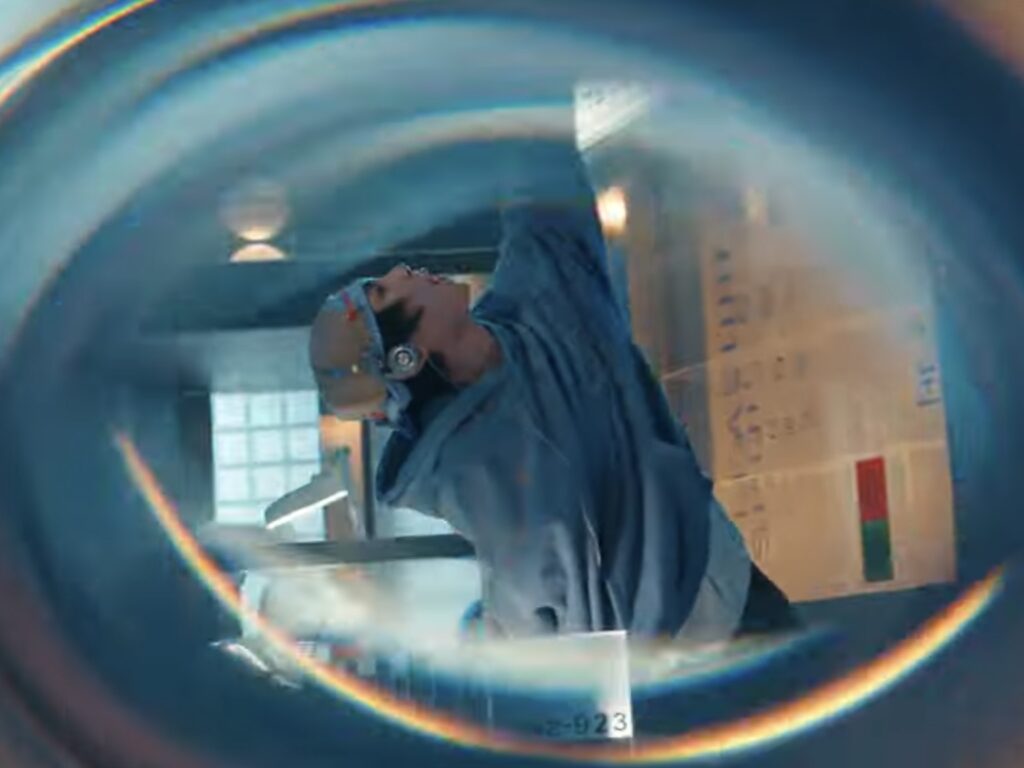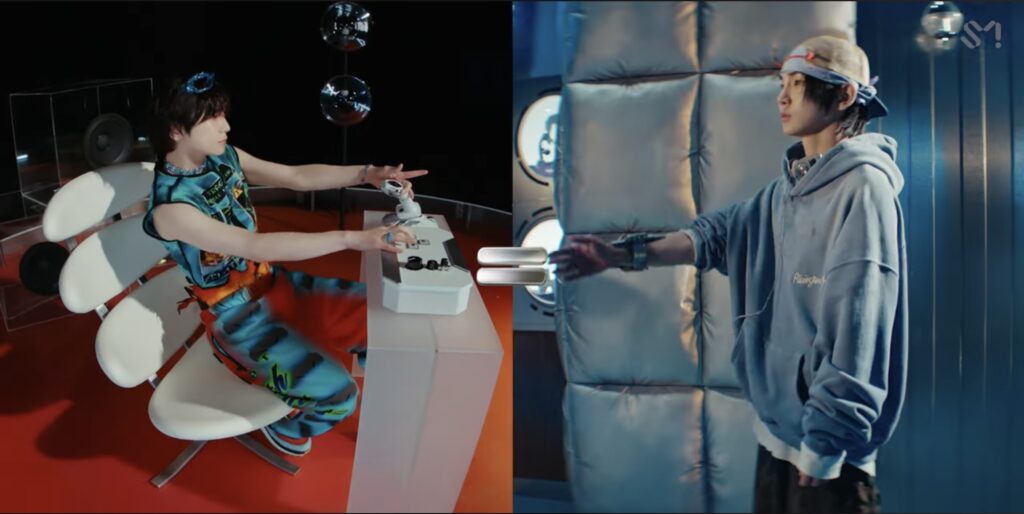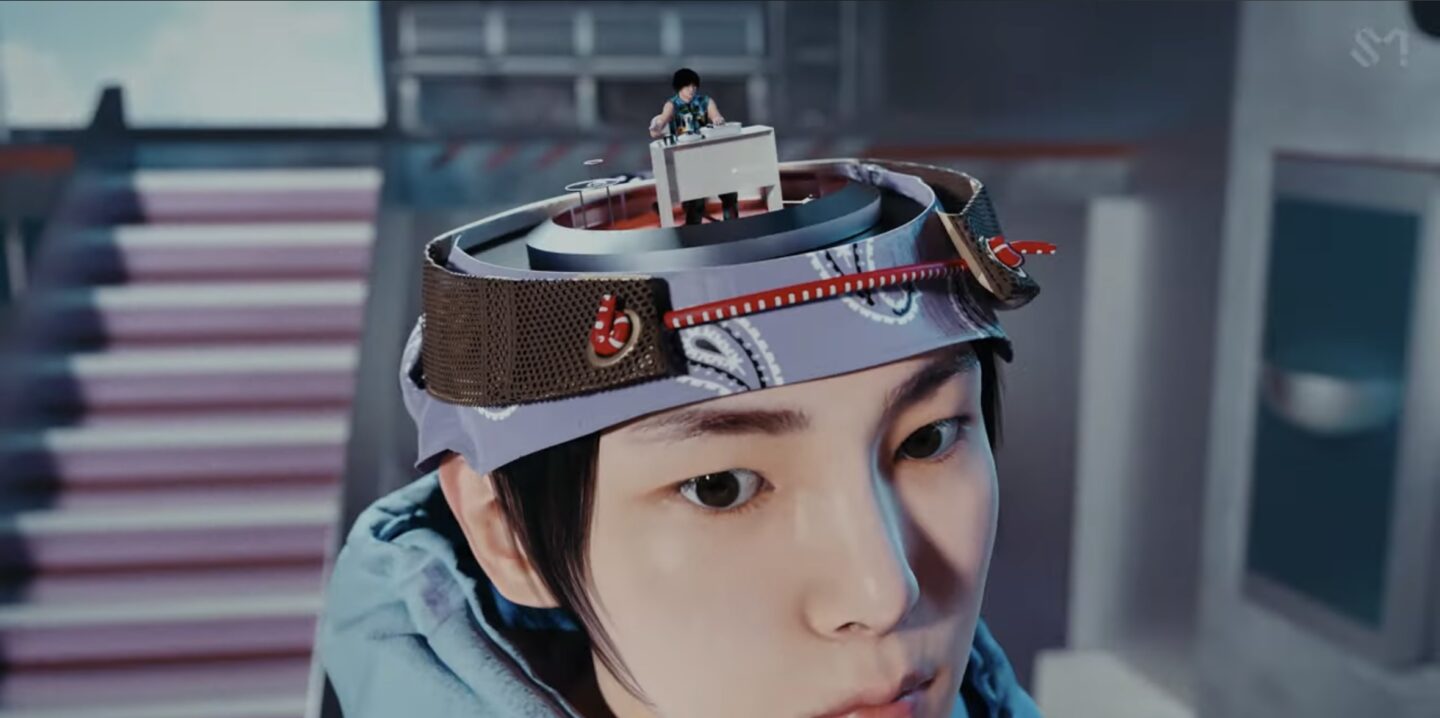
“I always try to choose the songs with things like the concept, the visual and marketing strategy in mind,” Shinee’s Key said about his latest solo album, Pleasure Shop. Indeed, Key is an artist who is known for his innovative visual concepts that carry through in all aspects of his marketing. In the case of Pleasure Shop, a mood sampler video depicts Key as a cyborg who sells cocktails that transport customers to a fantasy world. One version of the physical album encases the CD in the same martini glass from the teaser — suggesting that listeners will also find escapism in Key’s music.
Title track “Pleasure Shop” is a smooth house song with a consistent midtempo groove. It offers a pleasant listening experience, though it lacks the theatricality and grandiosity of previous Key singles like “Bad Love” or “Gasoline.” Without a big moment, it is an example of a title track that feels more complete in conjunction with its MV and overall concept.
Like the promotional materials that preceded it, the MV revolves around cyborg Key devising a fantasy world for a client (also played by Key). This world is intended to be compelling, as Key sings in the chorus: “The humdrum reality lacked what this world got.” The scenes accompanying the chorus, with Key’s sharp, confidently expressed dancing set to pulsating house beats, best convey an alternate reality more engaging than mundane life.
The MV, however, does not fully immerse us in a fantasy world, but continually reminds viewers that the world is constructed. The video employs split screen images, showing shop owner Key wielding a joystick to control his customer. In other scenes, he is sitting in customer Key’s head, where his brain would be. Similarly, the lyrics are from the perspective of the cyborg boasting about the services of the pleasure shop. For instance, he prides himself that he can offer “fantasy, romance, then action,” but we do not actually see any of these genres. The emphasis is on the creator rather than what the consumer actually experiences.

Ultimately, the MV emphasizes the artificial nature of our main source of pleasure: technology. Many scenes in the video insert pixelated squares or strings of code. Even the choreography sequences in the video will include a glitch in the frame — or over dancers’ faces. The MV also obscures the dancers’ features with animated faces, suggesting that this world is rich in imagination but only simulates human interactions.
In a press conference, Key revealed that “Pleasure Shop” also included AI-generated imagery. He stated that he wants to “keep track of the latest trends and technologies” and actively use AI. Some groups this year faced adverse reactions to their use of AI (Seventeen’s “Maestro” teasers and Madein’s “Uno” MV come to mind). “Pleasure Shop,” however, has largely evaded such criticism — perhaps because the incorporation of AI-generated art is well-executed, and perhaps because the use of such technology suits the MV’s concept.
In this context, Key does not vilify AI or technology, but “Pleasure Shop” does suggest that it is a temporary and unsatisfying means of pursuing happiness. The lyrics of the final chorus shift to note the fleeting pleasures of the shop:
I like this even if it’s locking me down deeper
Eyes open and they’ll be gone
Things I dreamed in this world

Similarly, the last section of the MV depicts the fantasy world literally coming apart, with glass breaking and panels falling away. The MV concludes with Key jumping out of the pleasure shop; the music stops, but perhaps a more meaningful reality begins.
The main strength of “Pleasure Shop” lies in its integration of visuals and music to convey its message about escapism. The MV provides some pleasures through technology, but also never lets us forget that it is a hollow substitution for real experiences and interactions.
(YouTube. Korea JoongAng Daily. The Korea Herald. Lyrics via YouTube. Images via SM Entertainment).



